

Cape Coast Region, Ghana
Site of Many European Slave Trade Forts
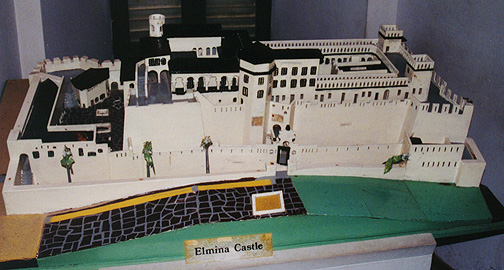
model of Elmina Castle
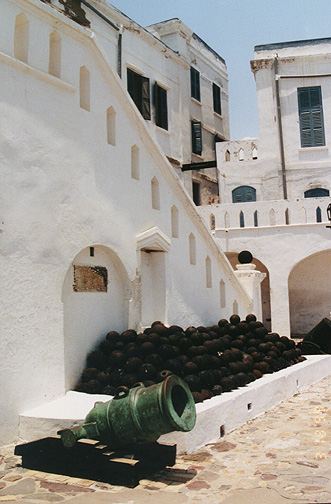
its
courtyard
(used by the Dutch in the slave trade)
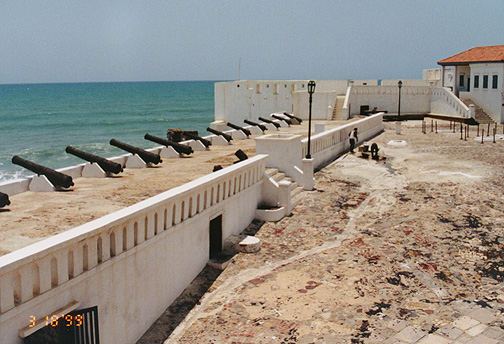
which was used in the slave trade
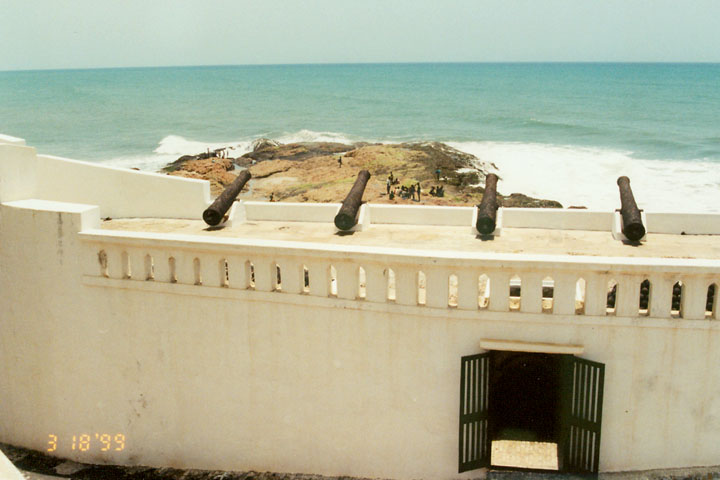
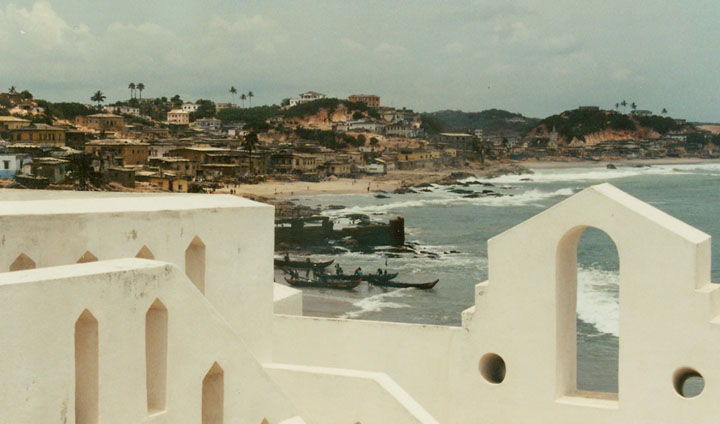
![]()
Cape Coast Castle

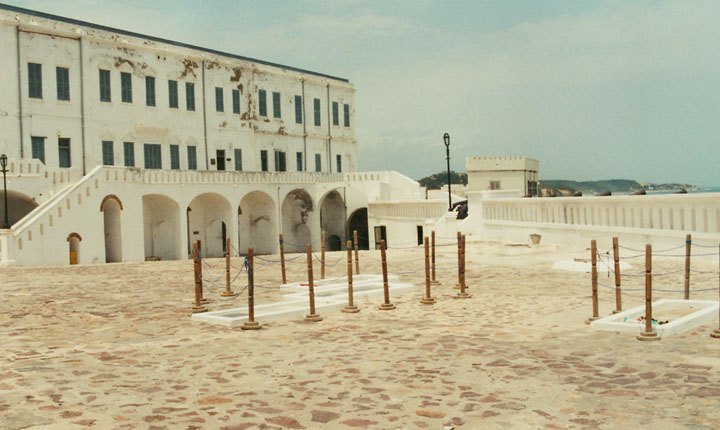
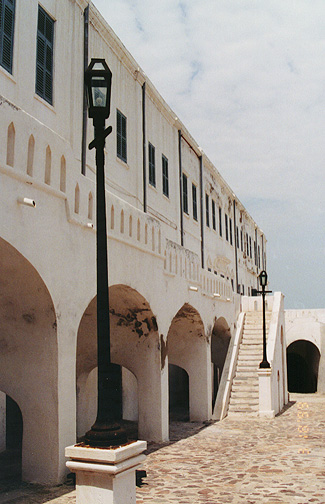
Cape Coast Castle
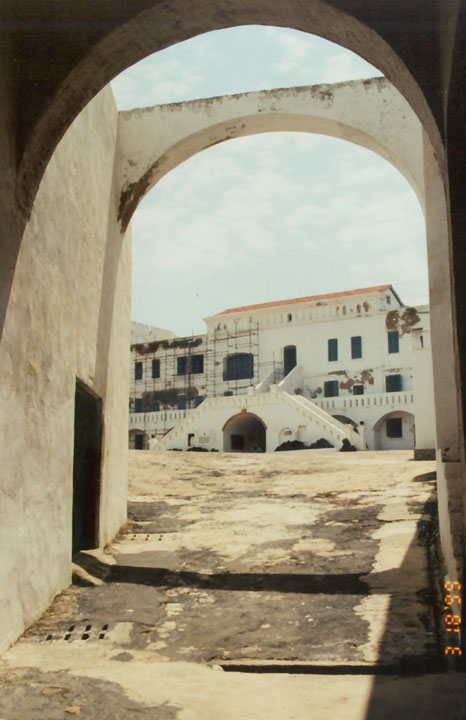
stone ramp where the slaves were taken to the ships
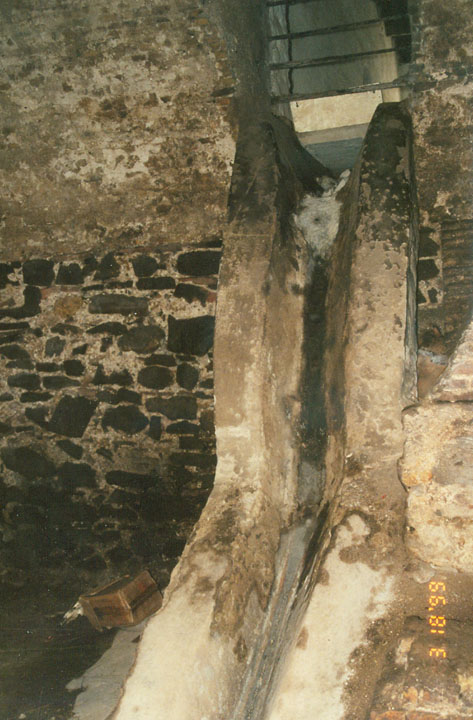
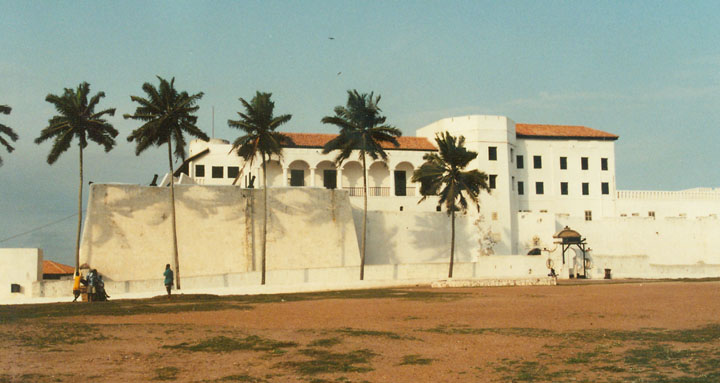
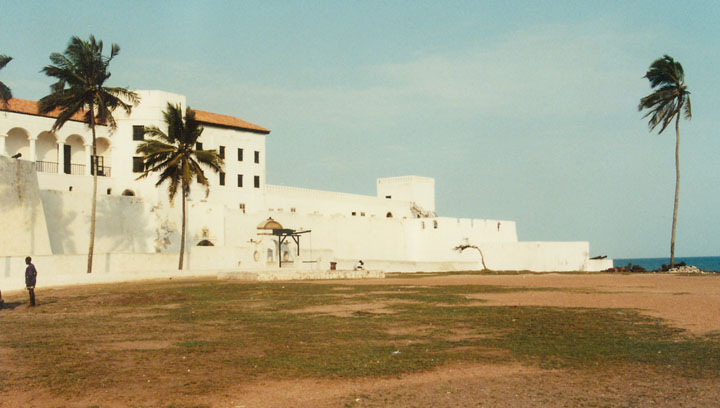
![]()
THE TRANS-ATLANTIC SLAVE TRADE & AFRICACA
text by
Rev. Dr.
S. S. Quarcoopome
Institute of African Studies
University of Ghana Legon, Ghana West Africa
The area in Africa, which was involved in the transatlantic slave trade, was the Guinea Coast. It stretches from the area of the present day Senegal to the southern borders of present day Angola. The Portuguese were the first Europeans to set foot in this area in the fifteenth century. Their objective was to find a sea route to India and the Orient as the Turks in 1453 had closed the land route. The Portuguese started trading in copper, brass, European cloth, etc in exchange for gold, which was in high demand in Europe. It was they who began to acquire slaves from the Bight of Benin and Biafra and the area of Niger Delta for the mining of the gold deposits in the Gold Coast, thereby introducing the Africans to the practice of using forced African slave labor, a practice foreign to the institution of slavery in West Africa.
It was the Portuguese who first took Africans as slaves to Europe after 1441. After 1460, they exported between 700 to 800 slaves to Portugal to work on the sugar plantation in Southern Portugal and Spain and the islands of Fernando Po, Sao Tome and Principe By the 1480's, the Portuguese interest in gold had changed to the purchase and sale of slaves. It is interesting to note that it was a Papal Bull, which authorized the opening of the slave market in Lisbon. The English Parliament also passed an Act legalizing the purchase of slaves in 1545. Even in 1452, the Pope declared that the possession of slaves was the right of all Christians.
As the Portuguese continued to explore the western sea route to India, their neighbors, the Spaniards were opening up the Atlantic route to America and the Caribbean, in the spirit of the Papal Bull of demarcation of 1493. After the exploration of the American continent, consequent to the voyages of Columbus, Vespucci and others, many nations rushed to establish colonies there. The earliest and the largest colonies were established by the Spaniards, Dutch, French and the English. They established big mining companies as well as coffee, cotton and sugar plantations.
From the beginning, indentured labor was recruited from Europe. These were mostly criminals, prisoners and those who could not pay their passage to America but were eager to go there to make their fortunes. However, it soon turned out that they were too few and were unequal to the task. Attempts to use the indigenous Americans also failed. In the process about 90% of their population were wiped out due to cruelty, violence and lack of resistance to disease introduced by the Europeans.
Attention was therefore shifted to the native African, who, as a result of their use by the Portuguese, had proved to be strong, hard working, resistant and could stand the diseases and the tropical weather. A Spanish monk, Las Casas, mooted the idea of recruiting Africans. Furthermore, it was observed that African rulers could be persuaded to sell their war captives and criminals. Consequently the Atlantic Slave trade initiated.
The first batch of African slaves to be exported to the Americas was in about 1501, from Lisbon Portugal. Forty years later, the slaves were being transported direct from the Guinea Coast. By 1630, the demand for slaves increased tremendously because of new farms opened up by the English, Dutch, the French in the Caribbean and Brazil. By the treaty of 1713 known as Asiento, Spain permitted Britain to introduce 144,000 Negro slaves into the Spanish American colonies up to 1733. In 1750, because of the lucrative nature of this trade the Spanish government bought back the Asiento for 100,000 pounds!
African slaves were packed like sardines in Slave ships from the Guinea Coast. They were stripped naked, fed like animals, underfed and over worked, in the ships, the conditions were appalling and unhygienic, so that sometimes a whole shipload of slaves died.
The produce of sugarcane, coffee, and cotton from the American plantations were shipped to Europe as raw materials to feed factories. From Europe cheap manufactured goods such as cotton cloth, brass wave, rum, inferior guns and gun powder were shipped to West Africa and exchanged for Africans captured and sold by Africans to be transported to work in the plantations of America. while Africa gave its most important resource, its people to build the economies and prosperity of Europe, she obtained in return consumables, which did not help in her growth and development. This is the Triangular or the Atlantic Slave Trade.
The Portuguese and the Europeans who followed them to Guinea, built forts and castles to store their goods as well as the acquired slaves. The coast of the present day Republic of Ghana, is littered with the highest concentration of forts and castles than any other coastline in Africa. Some of the most important ones are Elmina Castle, Cape Coast Castle, Christianborg Castle, Fort Crevecour, James Fort, Axim Fort etc. others were Factories or Baracoons. For over three hundred years, the slave trade was the main issue in the relation between Africa and Europe. It is not clear how many people were transported out of Africa. Historians have calculated the number to be anywhere between twenty-five million to seventy million, including those who died in the wars and those who perished in the middle passage, as well as those who survived and landed in America.
It affected Africa politically, economically, demographically and culturally Its impact is still very much with us presently.
![]()
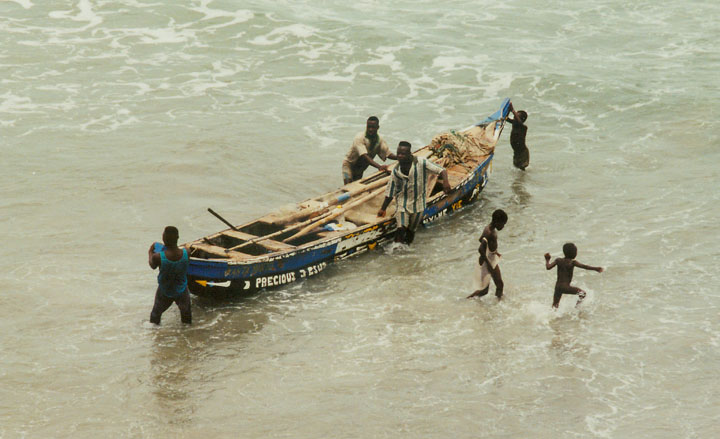
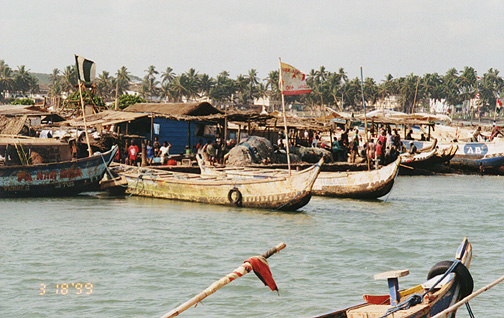
fishing boatsts
More Photos of the Elmina fishing boats
![]()
Cape Coast Fishing Port

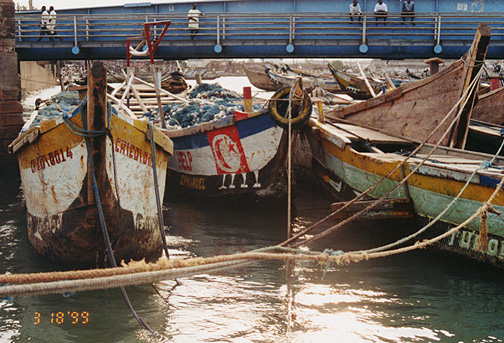
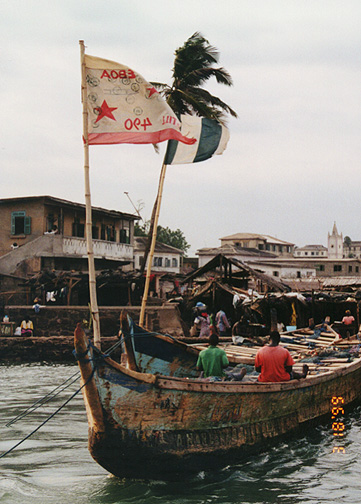
More Photos of Cape Coast fishing boats
![]()
![]()